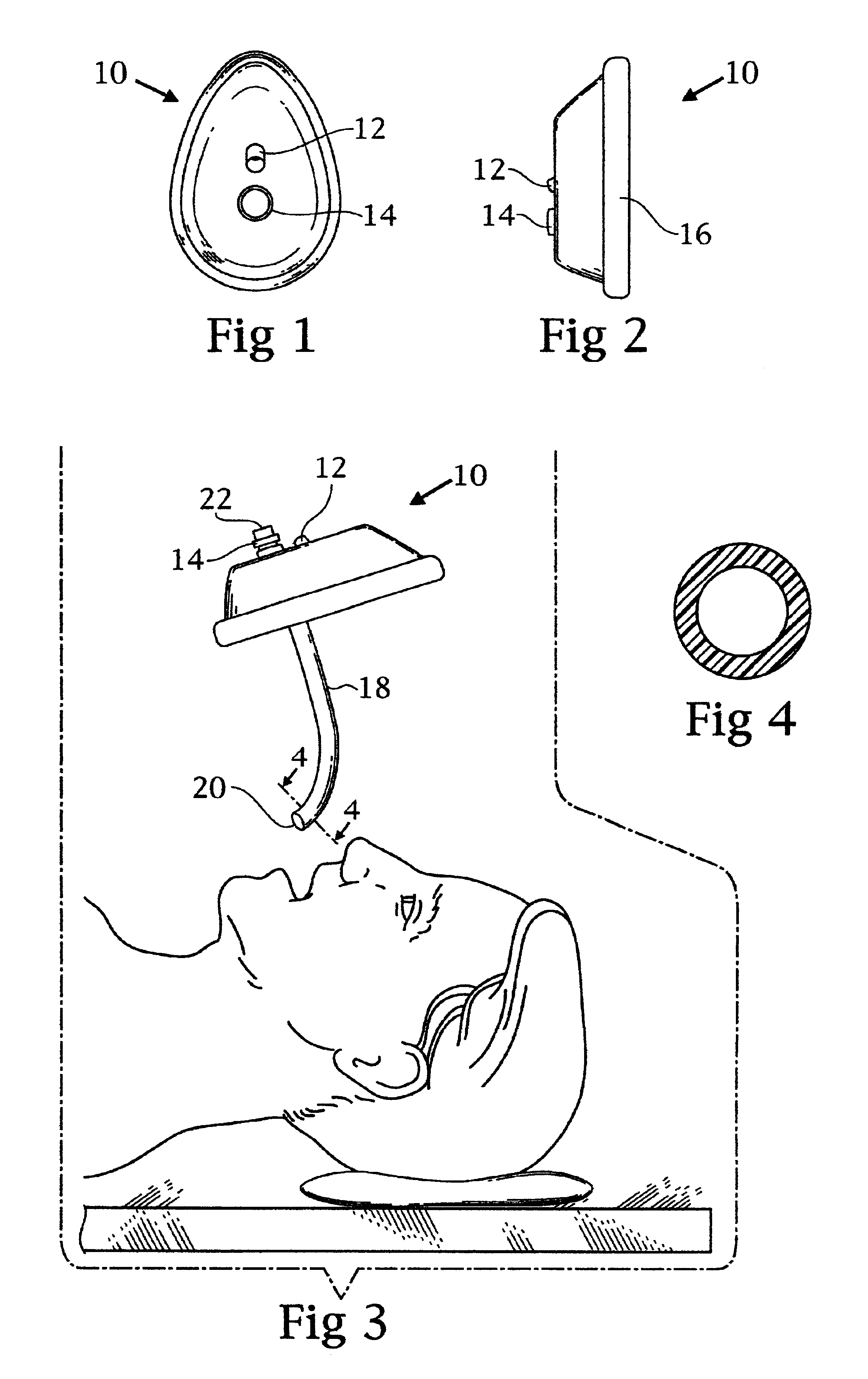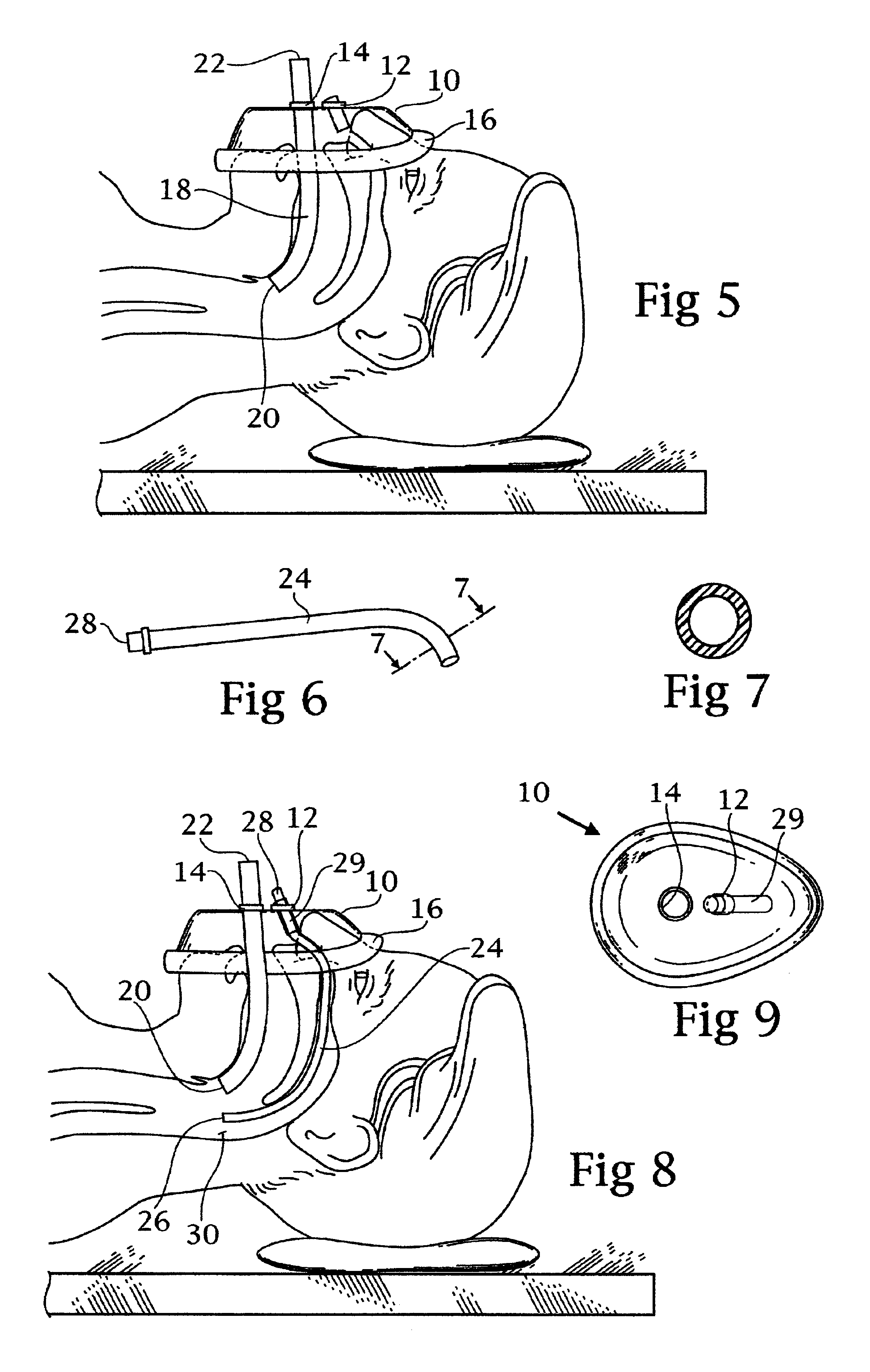Double barrel ventilation mask for a patient
a patient and mask technology, applied in the field of patient masks for ventilation, can solve the problems of significant number of patients who cannot be adequately ventilated, anoxic brain injury and death, and not immediately available outside the operating room, so as to improve ventilation and oxygenation
- Summary
- Abstract
- Description
- Claims
- Application Information
AI Technical Summary
Benefits of technology
Problems solved by technology
Method used
Image
Examples
Embodiment Construction
Referring now to FIGS. 1 and 2, a face piece 10 has nasal port and an oral port 14 formed therein, which form a portion of a face mask 42 (FIGS. 11, 12 and 13). A peripheral cuff 16 is formed about the face piece 10 to form a seal with the face of the patient when the face mask 42 is placed on the patient's face as will be described. Preferably, the peripheral cuff 16 is padded or inflated, or has a design to form a leak resistant seal with the patient's face. The face piece 10 is preferably formed of an air impermeable material such as rubber, plastic or treated fabric, which preferably is flexible.
A curved oral tube 18 is disposed in the oral port 14 in the face piece 10 (FIGS. 3 and 4). Preferably the oral tube is formed from a rigid material. The oral tube 18 may be permanently connected to the oral port 14 or may be removably connected. The oral port 14 is sealable around the oral tube 18. A first end 20 of the oral tube 18 extends into the mouth of the patient and the second e...
PUM
 Login to View More
Login to View More Abstract
Description
Claims
Application Information
 Login to View More
Login to View More - R&D
- Intellectual Property
- Life Sciences
- Materials
- Tech Scout
- Unparalleled Data Quality
- Higher Quality Content
- 60% Fewer Hallucinations
Browse by: Latest US Patents, China's latest patents, Technical Efficacy Thesaurus, Application Domain, Technology Topic, Popular Technical Reports.
© 2025 PatSnap. All rights reserved.Legal|Privacy policy|Modern Slavery Act Transparency Statement|Sitemap|About US| Contact US: help@patsnap.com



